By Tom Golden
I have long held that compassion and choice are two issues that play a part in nearly every men’s issue. But why? What do compassion and choice have to do with male suicide or male victims of domestic violence or just about any other men’s issue? Quite a bit actually. Let’s take a look at why compassion and choice are limited for men and then see how compassion and choice are essential ingredients to the issues.
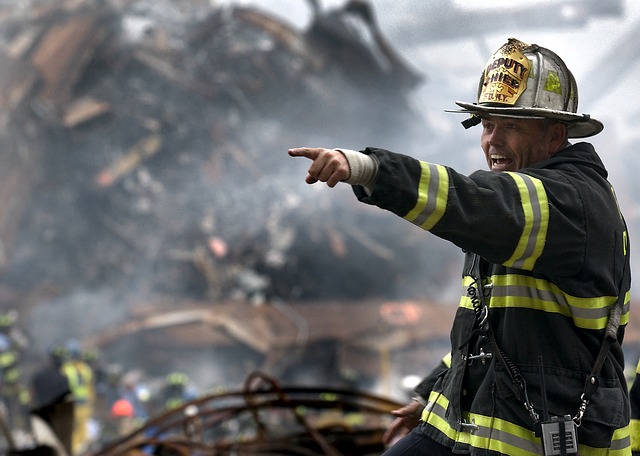 The origins of the lack of compassion and choice for men is gynocentrism. When you start to understand gynocentrism you will start to better understand the plight of men and boys. Gynocentrism at its most basic, is the mandate that women and children be kept safe and provided for at the expense of men. In other words, men are designated to insure the safety and provisions for women and children on an individual level, the family level, community level and on a macro level. This is not a totally bad thing. It has been what has created and maintained many cultures for millennia. As Stefan Molyneux says, “Eggs are scarce and sperm is plentiful.” This means we have needed to sacrifice our sperm in order to insure the safety of our eggs. Without women the culture dies a quick death. Women must be protected. Gynocentrism protects those who carry the eggs and does this at the expense of its men. This has been a very important element to our cultural success but it does come at a price.
The origins of the lack of compassion and choice for men is gynocentrism. When you start to understand gynocentrism you will start to better understand the plight of men and boys. Gynocentrism at its most basic, is the mandate that women and children be kept safe and provided for at the expense of men. In other words, men are designated to insure the safety and provisions for women and children on an individual level, the family level, community level and on a macro level. This is not a totally bad thing. It has been what has created and maintained many cultures for millennia. As Stefan Molyneux says, “Eggs are scarce and sperm is plentiful.” This means we have needed to sacrifice our sperm in order to insure the safety of our eggs. Without women the culture dies a quick death. Women must be protected. Gynocentrism protects those who carry the eggs and does this at the expense of its men. This has been a very important element to our cultural success but it does come at a price.
One consequence of protecting the women is that the men will need to at times face danger. The women need to be kept safe and the men will protect the boundary and sometimes die in that process. Our human history of gynocentrism is longer and deeper than most assume. We think of the hunter gatherers as serene and bucolic but that was sometimes far from the truth and gynocentrism predominated. Research shows that some South American hunter gatherer groups faced huge numbers of deaths of their men protecting the women and children.1 One group averaged the death of nearly 60% of its males in protecting the women from inter tribal attacks that were among other things, designed to steal the other group’s women! (the average for the groups studied was near 30% male deaths as a result of raids, ambush or larger scale conflicts) He who had the most women wins and these groups made a huge sacrifice of their males to insure they kept their women and children safe.
In its most obvious we can see how gynocentrism plays out when we note that men automatically and without question are the ones facing danger in our culture. Our war dead are nearly 100% male. Our deaths in dangerous occupations are 93% men. Our trashmen and sewage workers are nearly all male. The dirtiest and most dangerous jobs are jobs for men. No one questions this. It just seems right. This is the hidden power of gynocentrism. No one questions and no one notices. Hell, if women actually got equality to the above it would be a huge step down for them.
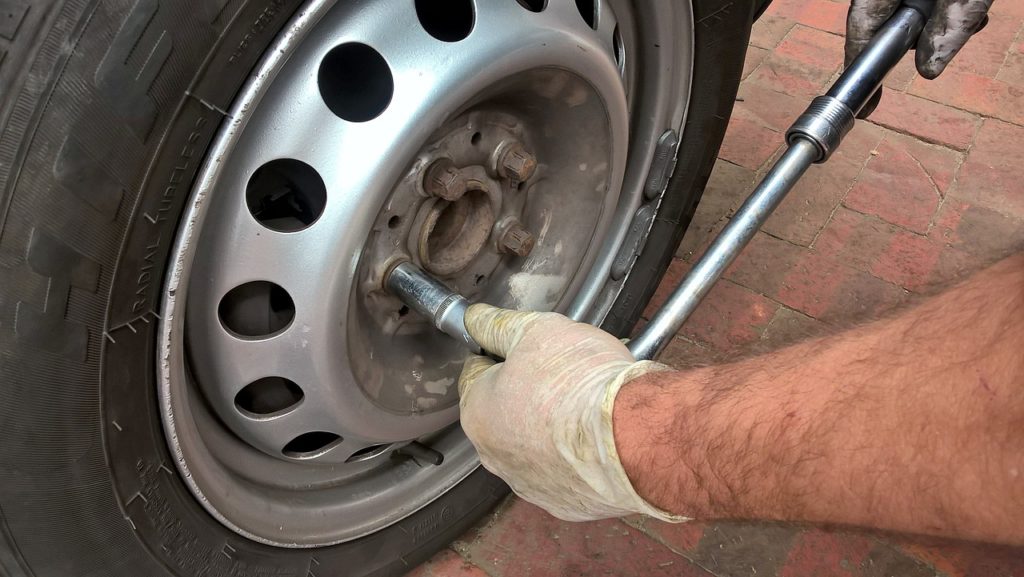 But gynocentrism runs much deeper than simply being about protecting the borders and doing the dangerous work. It has its tendrils into just about everything, silently and without fanfare. What happens when a woman has a flat tire? How many people have seen the help she will usually garner from men? Now think about what happens if a man has a flat tire. Does he get a similar treatment? Probably not. This is gynocentrism. When there are problems we jump to help women but expect the men to handle it themselves even in today’s atmosphere of “equality”.
But gynocentrism runs much deeper than simply being about protecting the borders and doing the dangerous work. It has its tendrils into just about everything, silently and without fanfare. What happens when a woman has a flat tire? How many people have seen the help she will usually garner from men? Now think about what happens if a man has a flat tire. Does he get a similar treatment? Probably not. This is gynocentrism. When there are problems we jump to help women but expect the men to handle it themselves even in today’s atmosphere of “equality”.
What happens when a woman is upset and falls into a sea of tears? Pretty much the same thing as the flat tire. People hover to offer support and see what might be wrong and what they can do. But what happens when men fall into a similar sea? People ignore him and avoid him. It is almost as if a woman’s pain is a call to action while a man’s pain is taboo. Compassion offered to men is a fraction of the compassion offered to women.
There are a number of youtube videos that employ actors to portray men beating women in public. The women are shown to get immediate support and help from male onlookers who see the violence. They quickly jump to her aid not knowing it is an arranged scene. These same videos then reverse the roles and show the women beating men in a similar manner and no one lifts a finger, in fact, they laugh. This is gynocentrism. We expect to help the women and expect the men to help themselves. Note also that we allow women to be dependent but do not allow the same for men.
On an even simpler level think of a man and a woman at work who need to move some boxes from one location to another. Some are heavy, some are light. Who will be moving the heavy ones? It is a foregone conclusion that the man will most often move the largest boxes and will protect her from having to do hard labor. This is gynocentrism.
And then there is the question of attractiveness. When a woman is attractive she gets special perks simply due to her appearance. No man can come close to having a similar response. This is gynocentrism. The eggs are protected and the attractive eggs get very special treatment.
 Think of that attractive woman being tied to the railroad tracks. What does that do to the hearts and minds of most people? Most of us have an inborn reaction that says DO SOMETHING to help her. But what about a man tied to the tracks? Is your reaction the same or different? Yes, you likely want to see him helped but is it the same gut wrenching sensation? The plots of many movies and novels are fueled by this gynocentric scenario. We all want the woman tied to the tracks safely released even if it means the death of numerous men in the process. A woman’s needs are a call to action while a man’s needs are often just ignored. He needs to save her!
Think of that attractive woman being tied to the railroad tracks. What does that do to the hearts and minds of most people? Most of us have an inborn reaction that says DO SOMETHING to help her. But what about a man tied to the tracks? Is your reaction the same or different? Yes, you likely want to see him helped but is it the same gut wrenching sensation? The plots of many movies and novels are fueled by this gynocentric scenario. We all want the woman tied to the tracks safely released even if it means the death of numerous men in the process. A woman’s needs are a call to action while a man’s needs are often just ignored. He needs to save her!
Just think for a minute what would happen to a man in the military who started complaining that we needed to have more female war deaths in order to make things equal for everyone. How would he be received? All hell would break loose at this questioning of the gynocentric norm and disregard for the safety of women. We see something similar when the opposite happens and men voice their desires for equal opportunities for services for men in things like domestic violence. Those who stand up for the needs of men in our gynocentric culture are seen as misogynistic, that is, they are routinely accused of hating women simply for pointing out the needs of men. Can you see how the fuel for this is gynocentrism?
 Another example of extreme gynocentrism is boot camp in the army. What is done? The recruit is taught that he is nothing. He is now not an individual, he is a part of a fighting group. His personal identity is deleted and he is taught to fight for the group, for a cause. He no longer exists. There is no compassion for his personal feelings and needs. Those are a distant second. He also has zero choice. He does what he is told. That is the extreme gynocentric model that plays out to one degree or another in our everyday life.
Another example of extreme gynocentrism is boot camp in the army. What is done? The recruit is taught that he is nothing. He is now not an individual, he is a part of a fighting group. His personal identity is deleted and he is taught to fight for the group, for a cause. He no longer exists. There is no compassion for his personal feelings and needs. Those are a distant second. He also has zero choice. He does what he is told. That is the extreme gynocentric model that plays out to one degree or another in our everyday life.
Do we care about the feelings of the woman tied to the tracks? Oh yes. Do we care about the feelings of the hero who rescues her? No. We care about his actions. His emotions are not important unless his feelings are about HER. Do we care about the emotions of the boot camp recruit? Nope. We care about his actions and what he does. His feelings need to be kept to himself. In the same way, under the gynocentric default we tend to care about the emotions of women but will be averse to the emotions of men. Our interest moves more towards his actions. Think about the last time you saw a woman cry in public. What was your reaction? Most of us want to help, want to offer support. We are drawn to her neediness. Now think about a man crying under the same circumstances you saw the woman. Are you as open to his tears as the woman? Most of us say no, we are not. We are repulsed by his neediness. The man is not expected to be needy, he is expected to have agency. If he is seen as needy he is judged harshly. This is gynocentrism.
These sorts of advantages for women have been going on for many years. In the 19th century men would strive to do the best job of keeping women safe and provided for. Just read their diaries and the diaries of their wives. These men put women on a pedestal. They thought of them as angelic and would try their best to not have them sully themselves with the grime of daily life outside the home. They worked hard to have them stay away from “dirty”things like the workplace or money. They did this because they saw women as worthy of protection (gynocentrism) and were happy to take on the extra burden in order to keep her safe. Then along comes feminism which makes the incredibly noxious and inaccurate claim that women were not held in high esteem at all, they were being oppressed. They took the protections that women had benefited from for centuries and spun them into being oppression. In my opinion this is the biggest lie of the 20th century and it has left a wake of chaos and vitriol. Women now actually believe themselves to be victims and that they have been shortchanged and oppressed. These are the same women who didn’t have to go to war, didn’t have to do the dirty work of building or maintaining the culture, were held in high esteem and basically worshiped (as American as Mom and Apple Pie) now see this as oppression. Houdini could not have done a more impressive magic trick.
So what do you think happened? It could be easily predicted that gynocentrsim would insure that when women appear to be in danger or need that men will jump and meet those needs as best they can. That’s the way both men and women are programmed. And that is just what happened. The feminists claimed to be tied to the tracks and rode, and continue to ride the gynocentric wave of men keeping women safe. Their unfounded claims that women were oppressed and held back have been taken seriously by well meaning highly gynocentric males, including male legislators. These claims of women being tied to the tracks and needing government intervention were welcomed by our gynocentric legislators who wanted to bend over backwards to help women. Over the years women have been given more and more while simultaneously continuing to enjoy the same gynocentric advantages they have been getting for hundreds of years. Our legislators have backed themselves into a corner and are now afraid to say no. They know that they have been hijacked but don’t have the courage to say no to saving a damsel in distress. Saying no would insure a loss in the next election.
This was the beginning of what I like to call Gynocentrism 2.0. The cultural imperative of caring for women continues and is now amplified by false claims of women having been oppressed. Simultaneously Gynocentrism 2.0 showed not only increased focus on the needs and desires of women, it also made a dramatic switch. Men in gynocentrism 1.0 were held in high esteem when they followed through with their role. They were both respected and admired and this was fuel for the masculine. Both sexes were held in high esteem. Now that fuel for men has run out as the admiration and respect has been gaudily replaced with disdain and blame. Incredibly, now men are seen as the problem and held accountable for social problems as if they were the cause. It is all the men’s fault. Much is said about men not doing very well these days but very few people note this important shift. When you don’t put fuel in the engine it ain’t goin too far.
In Gynocentrism 2.0 entire bureaucracies are built to serve women and cater to their difficulties but there are rarely any such bureaucracies built for men. The women are left with a choice of whether to seek help at a government funded facility (payed for with mostly male tax dollars) built for them while the men are left with no choices.
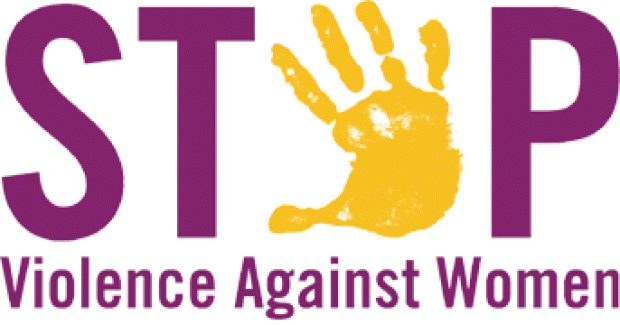 One of the best examples of this is the issue of domestic violence where we have known for decades that men are a sizable portion (likely nearing 50%) of the victims of domestic violence but all of the laws and services are built for women. We spend nearly a billion dollars a year for the Violence Against WOMEN Act (VAWA) that marginalizes the 50% of male victims. Recent research exposed the sad fact that when men who are the victims of domestic violence go to these government funded services for help they are treated very poorly. Often when the men are victims of domestic violence and they turn to the government funded services they are told that they are not victims of domestic violence, they are accused of being the perpetrators! They then send him to treatment for perpetrators! Researchers are calling this third party abuse, when the government bureaucracy as a third party, participates in the continued abuse of a victim. This is gynocentrism 2.0 which leaves no compassion for men and far fewer choices in seeking help.
One of the best examples of this is the issue of domestic violence where we have known for decades that men are a sizable portion (likely nearing 50%) of the victims of domestic violence but all of the laws and services are built for women. We spend nearly a billion dollars a year for the Violence Against WOMEN Act (VAWA) that marginalizes the 50% of male victims. Recent research exposed the sad fact that when men who are the victims of domestic violence go to these government funded services for help they are treated very poorly. Often when the men are victims of domestic violence and they turn to the government funded services they are told that they are not victims of domestic violence, they are accused of being the perpetrators! They then send him to treatment for perpetrators! Researchers are calling this third party abuse, when the government bureaucracy as a third party, participates in the continued abuse of a victim. This is gynocentrism 2.0 which leaves no compassion for men and far fewer choices in seeking help.
I was involved in lobbying for male victims of domestic violence during the reauthorization of the VAWA in both 2005 and 2012. Our group was well received by then Senator Biden. He and his staff listened to our data and stories about male victims in several meetings at his Senate office. He assured us we would be a part of the hearings. When the hearing came not one of our group was allowed to speak. I couldn’t believe it. Biden was totally aware of the problem of male victims and intentionally sabotaged our efforts to find support for men. It was then that I realized how deeply our system is biased and non-functional. Gynocentrism 2.0.
It’s important to point out that our government has been pushing a gynocentric agenda for some time. In the 1960’s President Johnson set in motion the War on Poverty which proceeded to demand the removal of black fathers from their families in order for mom to get welfare. Now our family courts are doing something similar as they remove fathers from the home through no fault on the fathers part. The woman’s needs come first, father’s a distant second.
My state of Maryland created a Commission for Men’s Health a number of years ago. I was fortunate to serve as the vice chair of that commission and wrote three of the four reports that were to be sent to the governor. The reports I wrote were what I call “male friendly.” That is, they voiced and considered the needs of men without bowing to the prevailing political correctness. The chairman of the commission wrote the other report which was a bit more what the Health Department, our host agency, was anticipating. All four reports were unanimously approved by the full commission. When the commission’s work was done and it came time to file the reports to the governor and a host of other Maryland politicians and get them into the Maryland State Library the Health Department only filed the report that was written by the Chairman. They were confronted with this and said, “ooops, we will file it now.” But they didn’t. It took a year to track down the files and finally get them into the Maryland system. The full story of this event will be told in a chapter in Janice Fiamengo’s upcoming book. It couldn’t be more clear that when the needs of men were given voice, the status quo balked. It seems that our mid level bureaucrcrats are filled with gynocentrism 2.0.
I think you can see now how women’s complaints and our legislators zealous rush to help them have turned things topsy turvy. Rape shield laws have been written to protect the rape victims and this is a good thing. But those same laws failed to protect the accused man. His name can be released to the media prior to any conviction. Her name is permanently protected while his name is plastered all over the media and he has his life ruined simply due to an accusation which may or may not be proven false . Gynocentrism 2.0.
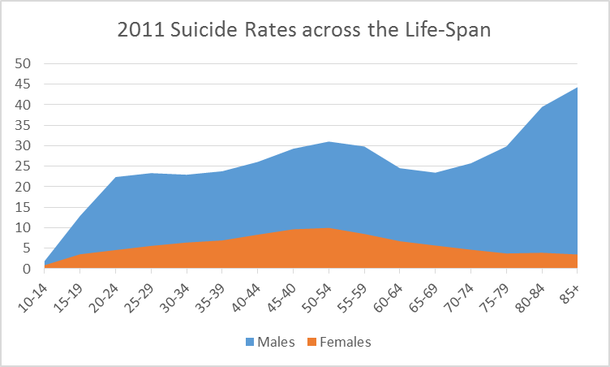 Another example is the issue of suicide where males are 80% of all completed suicides. Incredibly this 80% fact is rarely mentioned in the media leaving most people unaware that the biggest risk factor in suicide is being male. It is not surprising that females get the majority of attention around suicide both clinically and in research. This even though men are the vast majority of those needing help. In 2009 the National Association of Social Workers (NASW) did some research on suicide. I was shocked to see it was a study on girls! I wrote to then NASW Director Elizabeth Clark and asked why the research focused on girls when it was men and boys who were the vast majority of suicides. She wrote me back and said that the funder for the research had specified to only study girls. Just imagine for a moment someone who funded research for Sickle Cell Disease but stipulated the research had to be on whites. Can you imagine the outrage? Blacks are 60-80% of those with Sickle Cell disease and to study only whites would be seen as totally racist but somehow studying only girls and suicide is okay. That is gynocentrism.
Another example is the issue of suicide where males are 80% of all completed suicides. Incredibly this 80% fact is rarely mentioned in the media leaving most people unaware that the biggest risk factor in suicide is being male. It is not surprising that females get the majority of attention around suicide both clinically and in research. This even though men are the vast majority of those needing help. In 2009 the National Association of Social Workers (NASW) did some research on suicide. I was shocked to see it was a study on girls! I wrote to then NASW Director Elizabeth Clark and asked why the research focused on girls when it was men and boys who were the vast majority of suicides. She wrote me back and said that the funder for the research had specified to only study girls. Just imagine for a moment someone who funded research for Sickle Cell Disease but stipulated the research had to be on whites. Can you imagine the outrage? Blacks are 60-80% of those with Sickle Cell disease and to study only whites would be seen as totally racist but somehow studying only girls and suicide is okay. That is gynocentrism.
Our gynocentric legislators have outlawed any form of genital mutilation of females but have failed to do the same for our baby boys. Boys routinely undergo a surgical removal of part of their penis without anesthesia. Of course the baby boys scream during and after this mutilation. Some nurses say they have seen baby boys scream for days after. Many are thinking today that this trauma creates PTSD for those males who have been circumcised and presently about four out of every 5 males in the United States has suffered this mutilation.  Research is showing that psychological impact of circumcision on boys is similar to the psychological impact for girls who have undergone genital mutilation. This procedure is damaging our boys while most people think it is simple little snip. Wrong. We care about our little girls but fail in mustering enough compassion for boys to shelter them from such barbaric treatment and we give them no choice. Gynocentrism.
Research is showing that psychological impact of circumcision on boys is similar to the psychological impact for girls who have undergone genital mutilation. This procedure is damaging our boys while most people think it is simple little snip. Wrong. We care about our little girls but fail in mustering enough compassion for boys to shelter them from such barbaric treatment and we give them no choice. Gynocentrism.
In healthcare we have seen our legislators create seven national commissions for women’s health but none for men. We have official government web sites for womenshealth.gov and girlshealth.gov but just look at what happens when you go to menshealth.gov or boyshealth.gov. Nothing. You find a 404 page not found error. It does not exist. Get the picture? When anyone starts looking critically at our world it becomes clear that gynocentrism is at its core. We constantly hear criticism of men not going to the doctor etc but look at the concern for their health above by not even having a web site. Women in need get the help and men just need to take care of themselves. Just like the flat tire we talked about above. And no one is even aware this is going on.

Warren Farrell put together a group of clinicians, academics, researchers, authors and other experts on men and boys who wrote a proposal for a White House Council on Boys and Men. I was happy to be included as one of those who put the proposal together. President Obama had created a council for women and girls as soon as he got into office. Now he was being asked to do the same for boys and men. One of our group members, a man named Willie Isles was an executive with the Boy Scouts and had a meeting scheduled with the President. The plan was for Willie to have two Boy Scouts introduce the idea of the White House Council on Boys and Men to the President. Just before that meeting was to take place the discussion of a council for boys and men was struck from the agenda. It was forbidden to even be discussed. Gynocentrism anyone?
There is an anti-male bias in mental health research. One study on teen relationship violence found that boys and girls are suffering from this problem at similar rate. But once the research is translated into news articles it only focuses on the hardships the girls face. Worse yet, once the study is translated by legislators into an action plan to help the teen violence problem the only ones offered assistance are the girls while the boys are blamed. Yes, boys are abused but they simply don’t get compassion. Gynocentrism
 In one study about childhood rape the researchers found that boys were more often the victims of actual childhood rapes than the girls. Then in writing up their research failed to specifically include this information about boys as victims of rape. Furthermore, when they went to the media they also failed to mention the fact that they have found that boys were raped more often than girls. Gynocentrism.
In one study about childhood rape the researchers found that boys were more often the victims of actual childhood rapes than the girls. Then in writing up their research failed to specifically include this information about boys as victims of rape. Furthermore, when they went to the media they also failed to mention the fact that they have found that boys were raped more often than girls. Gynocentrism.
Title IX — Has been a great help to girls and athletics but has dismantled over 1000 men’s college teams. We focus on helping women but ignore the pain of men.
We have all heard of the racial sentencing bias where blacks tend to get stiffer sentences than whites for the same crime. But the research is telling us that there is a bias that is six times as large as the racial bias that sentences men to longer sentences than women. Yet, we hear nothing of this in the media and no one seems to care. Clearly the judges have less compassion for men and offer them far less choice.
I have seen a number of men in therapy who came to me when their wives wanted an abortion and they (the men) wanted to keep the child. The men were powerless to do anything. Can you see how these men had no choice in the matter? His wife said, “My body, my choice” and he said “My child, your choice, I have none.” He had no choice and if he had said something I feel sure he would have heard some variation of big boys don’t cry. Know what I mean? Can you see how no one really cares or offers them compassion for their plight? Compassion and Choice.
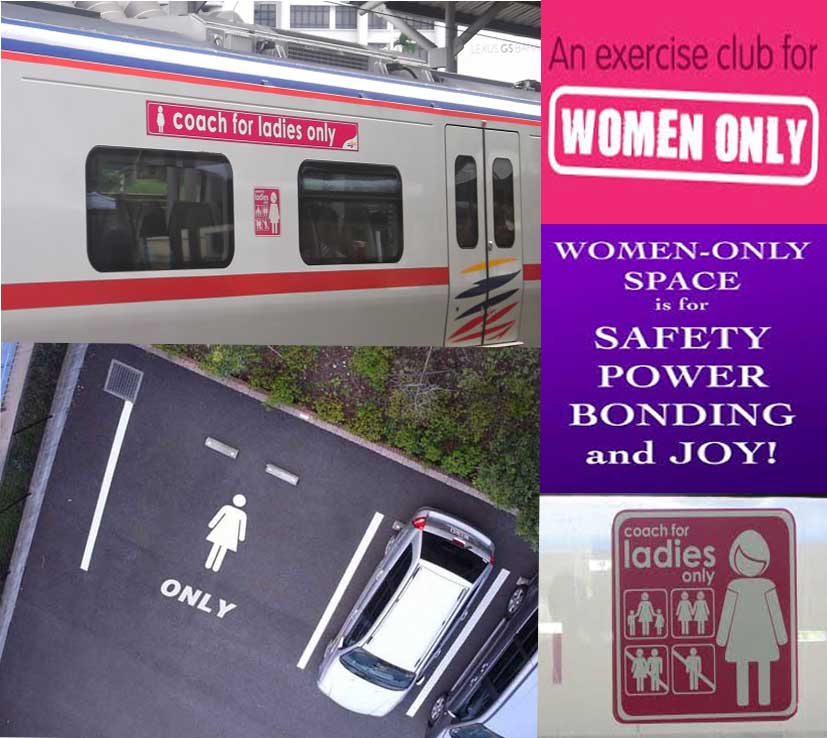
Look at men’s clubs and men’s spaces that have been traditional places for men to gather. Gone. They have been opened to women and not replaced with anything that would give men a safe place to simply gather with other men. Men gathering became the enemy with the accusation of secret deals that would keep women out of business dealings. At the same time all women’s clubs have soared. Women only gyms, women only parking places, women only subway cars, women only everything….but no comparable opportunities for men. There are even groups that keep track of all of the groups for women. One is The National Association of Commissions for Women which keeps track of the literally hundreds of commissions for women. That is gynocentrism 2.0 on steroids.
Instead of thinking of choice for men, the majority of our gynocentric culture are thinking instead the word “should.” Men should do this, men should do that and if they don’t, they are not really men. Most men are caught in this drama that researchers are calling “precarious manhood” where men are forced to prove their worth repeatedly in order to be called men. Women do not face a similar situation.
Professions are not immune to Gynocentrism. The profession of social work is a prime example. This group is focused on women and ignores the needs and the hardships of men. Their educational system offers classes on just about every possible client to work with including women, gays, handicapped, children but fails to teach their charges even the first thing about men and boys. This even though men and boys make up a good portion of the clientele they will be working with.
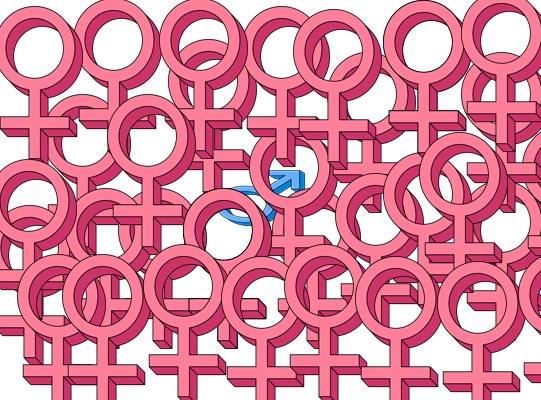 Our focus has been on a larger scale or macro level and it is very easy to see the imbalance in so many spheres. The point here is not that the services that have been created were not a good thing or were undeserved. Many of the services offered have been very helpful to women and girls. The point here is that it has been a very one sided ride with nearly all the services going to women and girls and the men and boys basically ignored. Men and boys have simply not gotten compassion and choice. Gynocentrism 2.0.
Our focus has been on a larger scale or macro level and it is very easy to see the imbalance in so many spheres. The point here is not that the services that have been created were not a good thing or were undeserved. Many of the services offered have been very helpful to women and girls. The point here is that it has been a very one sided ride with nearly all the services going to women and girls and the men and boys basically ignored. Men and boys have simply not gotten compassion and choice. Gynocentrism 2.0.
But let’s take a quick look at the impact of gynocentrism on a micro level. We have seen so far that the public has very little interest in men’s emotions. While that is surely true on a macro level it is also the case on the micro. What is the tired and hackneyed message that the some women offer her man? Oh, they say “You are not dealing with your feelings.” I hope you can see now that this sort of shaming is really an excuse to NOT deal with his emotions. Much has been written by gynocentric types about men’s not emoting in public, or men not emoting like women, while maintaining the underlying assumption that there must be something wrong with them. But almost nothing has been written about the brick wall men face when they do emote. When men have emotions people disappear. No one wants to hear it.
What I have seen repeatedly is that men have very different ways to process emotions. Ways that are invisible to most. They have likely developed these different ways due to the prevalence of gynocentrism and are happy with their paths to work with their own emotions and gladly take care of things on their own without fanfare and “help.” The saddest part of this is that most women simply do not see his different ways and assume he is “doing it wrong” since it isn’t like what she does.

Conclusion
Gynocentrism creates a cultural default both on a micro and macro level where women’s distress is a call to action and a man’s distress is seen at best as a distraction and at worst a taboo. This leaves men being offered considerably less compassion and fewer choices. In the past 50 years the original gynocentric defaults have morphed into gynocentrism 2.0 which has seen a huge increase in both the lop-sided services favoring women and the disdain and blame focused on men.
Very few people are conscious of this habitual default, they simply assume it is just the way the world works.
Becoming more and more aware of gynocentrism makes it easier to see why men are 80% of the completed suicides but are basically ignored. It makes sense now that men are nearly 50% of the victims of domestic violence but are routinely disregarded. It makes sense now why boys genital mutilation is the fourth most popular surgical procedure in the U.S. even though it is unnecessary and highly damaging. The world is geared to have compassion for women’s needs but not as much for the needs of men. We could go on and on about each of the many men’s issues and see how the lack of compassion and choice plays a part in their dilemma.
The unconscious nature of gynocentrism may be its most ruinous aspect. People are simply unaware of the great differences in the way men and women are treated. It is in some ways reminiscent of the racism I remember in the mid 20th century. People were simply unaware of their treatment of blacks. There were surely outright bigots at the time but the majority of people were basically asleep to the impact of their attitudes and behaviors and went along with the status quo that treated blacks and whites in significantly different ways. The general public was duped by a media that portrayed blacks as inferior and an educational system and even academic research that did the same. With gynocentrism 2.0 we are seeing something very similar but instead of the blacks it is now our men. Today’s gynocentrism is made up primarily of people who are basically unaware of the impact of their behaviors and are simply going along with the gynocentric status quo.
It’s time to wake up.
Knowing these things and taking the red pill makes it important for us to start offering men and boys greater compassion and choice.
And let’s not forget. Men Are Good!
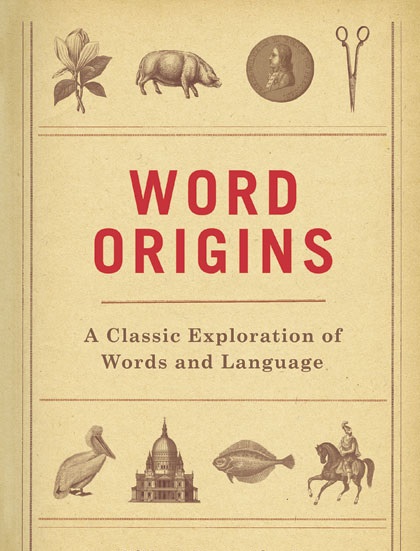

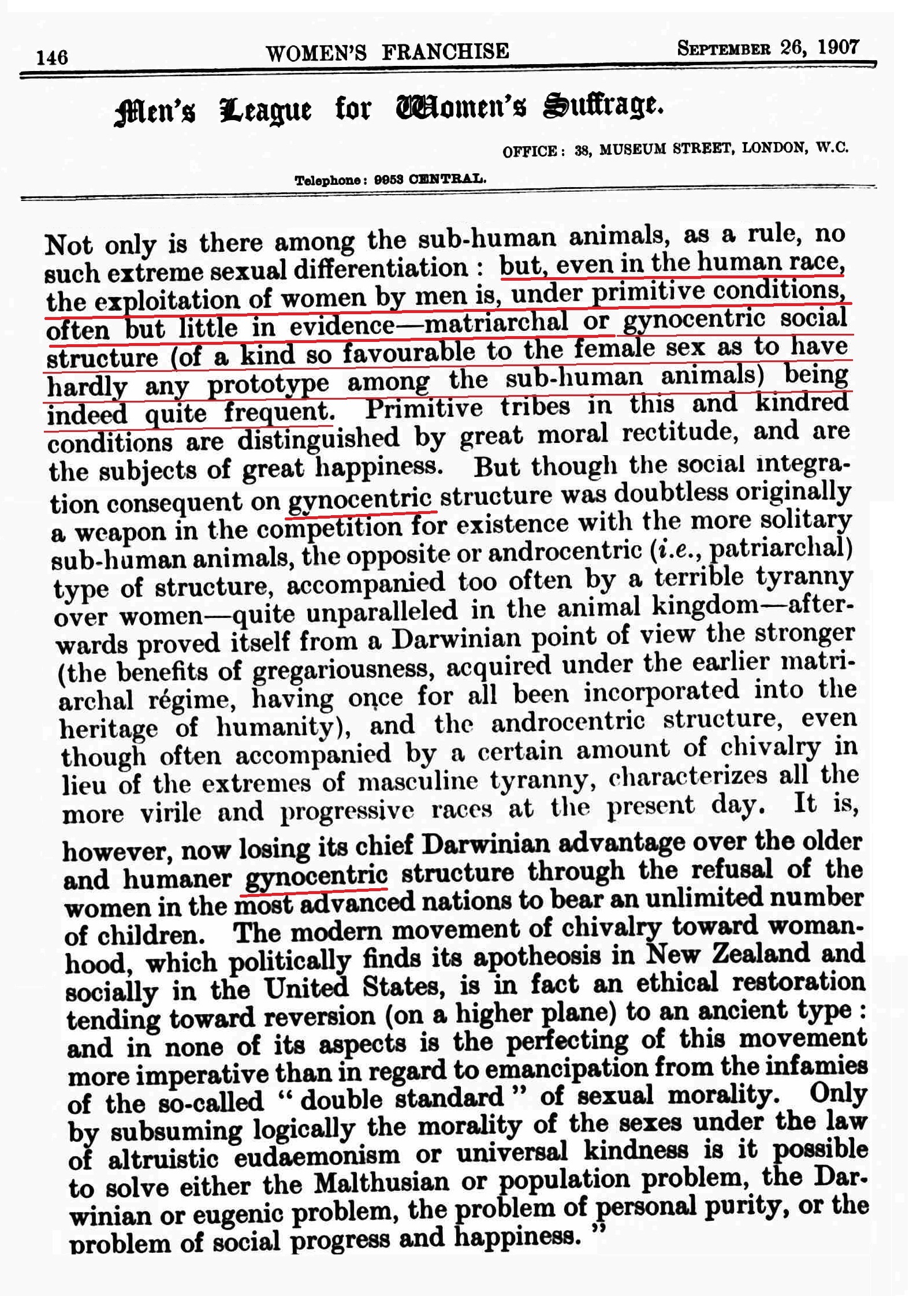
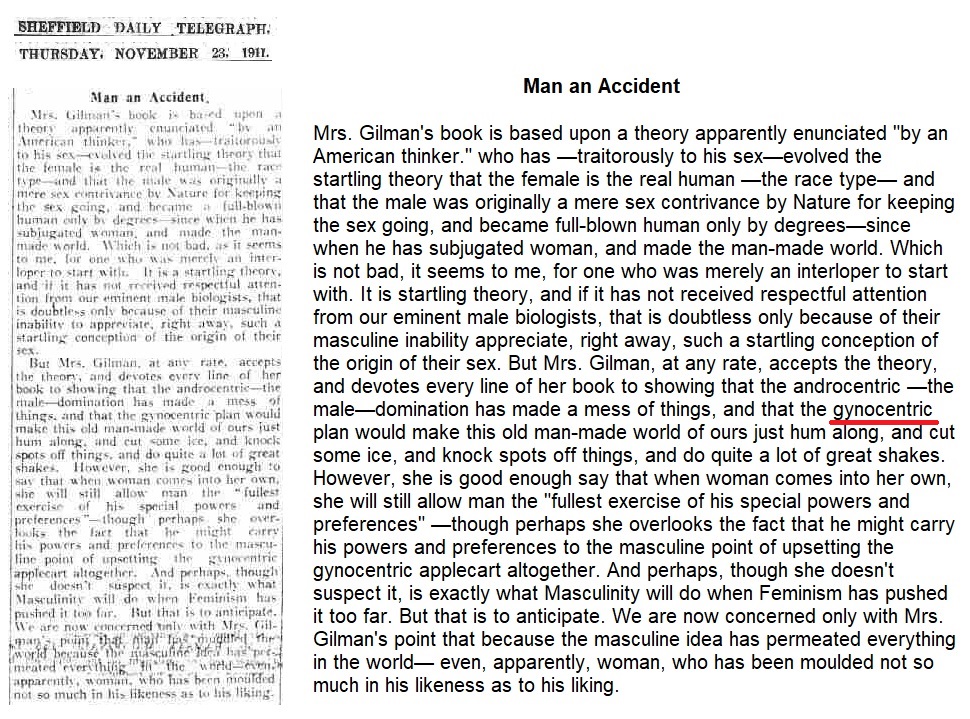
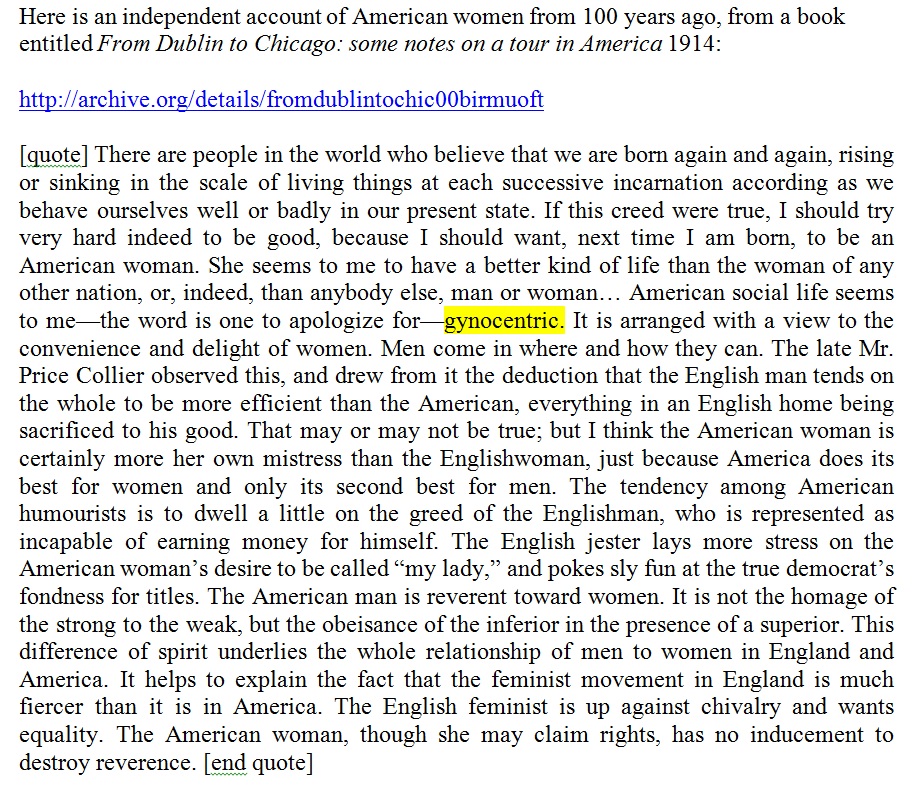
 The origins of the lack of compassion and choice for men is
The origins of the lack of compassion and choice for men is  But gynocentrism runs much deeper than simply being about protecting the borders and doing the dangerous work. It has its tendrils into just about everything, silently and without fanfare. What happens when a woman has a flat tire? How many people have seen the help she will usually garner from men? Now think about what happens if a man has a flat tire. Does he get a similar treatment? Probably not. This is gynocentrism. When there are problems we jump to help women but expect the men to handle it themselves even in today’s atmosphere of “equality”.
But gynocentrism runs much deeper than simply being about protecting the borders and doing the dangerous work. It has its tendrils into just about everything, silently and without fanfare. What happens when a woman has a flat tire? How many people have seen the help she will usually garner from men? Now think about what happens if a man has a flat tire. Does he get a similar treatment? Probably not. This is gynocentrism. When there are problems we jump to help women but expect the men to handle it themselves even in today’s atmosphere of “equality”. Think of that attractive woman being tied to the railroad tracks. What does that do to the hearts and minds of most people? Most of us have an inborn reaction that says DO SOMETHING to help her. But what about a man tied to the tracks? Is your reaction the same or different? Yes, you likely want to see him helped but is it the same gut wrenching sensation? The plots of many movies and novels are fueled by this gynocentric scenario. We all want the woman tied to the tracks safely released even if it means the death of numerous men in the process. A woman’s needs are a call to action while a man’s needs are often just ignored. He needs to save her!
Think of that attractive woman being tied to the railroad tracks. What does that do to the hearts and minds of most people? Most of us have an inborn reaction that says DO SOMETHING to help her. But what about a man tied to the tracks? Is your reaction the same or different? Yes, you likely want to see him helped but is it the same gut wrenching sensation? The plots of many movies and novels are fueled by this gynocentric scenario. We all want the woman tied to the tracks safely released even if it means the death of numerous men in the process. A woman’s needs are a call to action while a man’s needs are often just ignored. He needs to save her! Another example of extreme gynocentrism is boot camp in the army. What is done? The recruit is taught that he is nothing. He is now not an individual, he is a part of a fighting group. His personal identity is deleted and he is taught to fight for the group, for a cause. He no longer exists. There is no compassion for his personal feelings and needs. Those are a distant second. He also has zero choice. He does what he is told. That is the extreme gynocentric model that plays out to one degree or another in our everyday life.
Another example of extreme gynocentrism is boot camp in the army. What is done? The recruit is taught that he is nothing. He is now not an individual, he is a part of a fighting group. His personal identity is deleted and he is taught to fight for the group, for a cause. He no longer exists. There is no compassion for his personal feelings and needs. Those are a distant second. He also has zero choice. He does what he is told. That is the extreme gynocentric model that plays out to one degree or another in our everyday life. One of the best examples of this is the issue of domestic violence where we have known for decades that
One of the best examples of this is the issue of domestic violence where we have known for decades that  Another example is the issue of suicide
Another example is the issue of suicide  Research is showing that psychological impact of circumcision on boys is similar to the psychological impact for girls who have undergone genital mutilation. This procedure is damaging our boys while most people think it is simple little snip. Wrong. We care about our little girls but fail in mustering enough compassion for boys to shelter them from such barbaric treatment and we give them no choice. Gynocentrism.
Research is showing that psychological impact of circumcision on boys is similar to the psychological impact for girls who have undergone genital mutilation. This procedure is damaging our boys while most people think it is simple little snip. Wrong. We care about our little girls but fail in mustering enough compassion for boys to shelter them from such barbaric treatment and we give them no choice. Gynocentrism.
 In one study about childhood rape the researchers found that
In one study about childhood rape the researchers found that 
 Our focus has been on a larger scale or macro level and it is very easy to see the imbalance in so many spheres. The point here is not that the services that have been created were not a good thing or were undeserved. Many of the services offered have been very helpful to women and girls. The point here is that it has been a very one sided ride with nearly all the services going to women and girls and the men and boys basically ignored. Men and boys have simply not gotten compassion and choice. Gynocentrism 2.0.
Our focus has been on a larger scale or macro level and it is very easy to see the imbalance in so many spheres. The point here is not that the services that have been created were not a good thing or were undeserved. Many of the services offered have been very helpful to women and girls. The point here is that it has been a very one sided ride with nearly all the services going to women and girls and the men and boys basically ignored. Men and boys have simply not gotten compassion and choice. Gynocentrism 2.0.